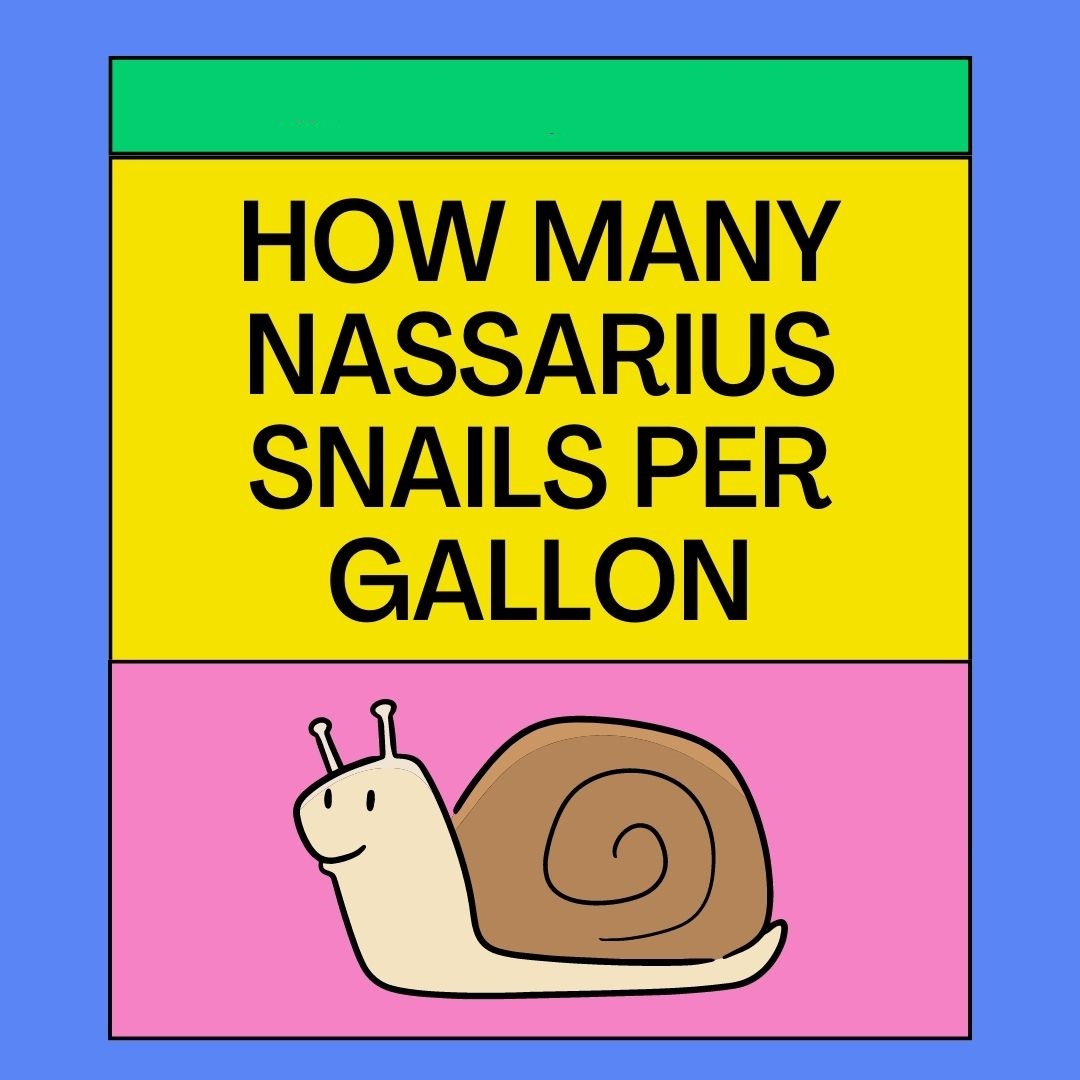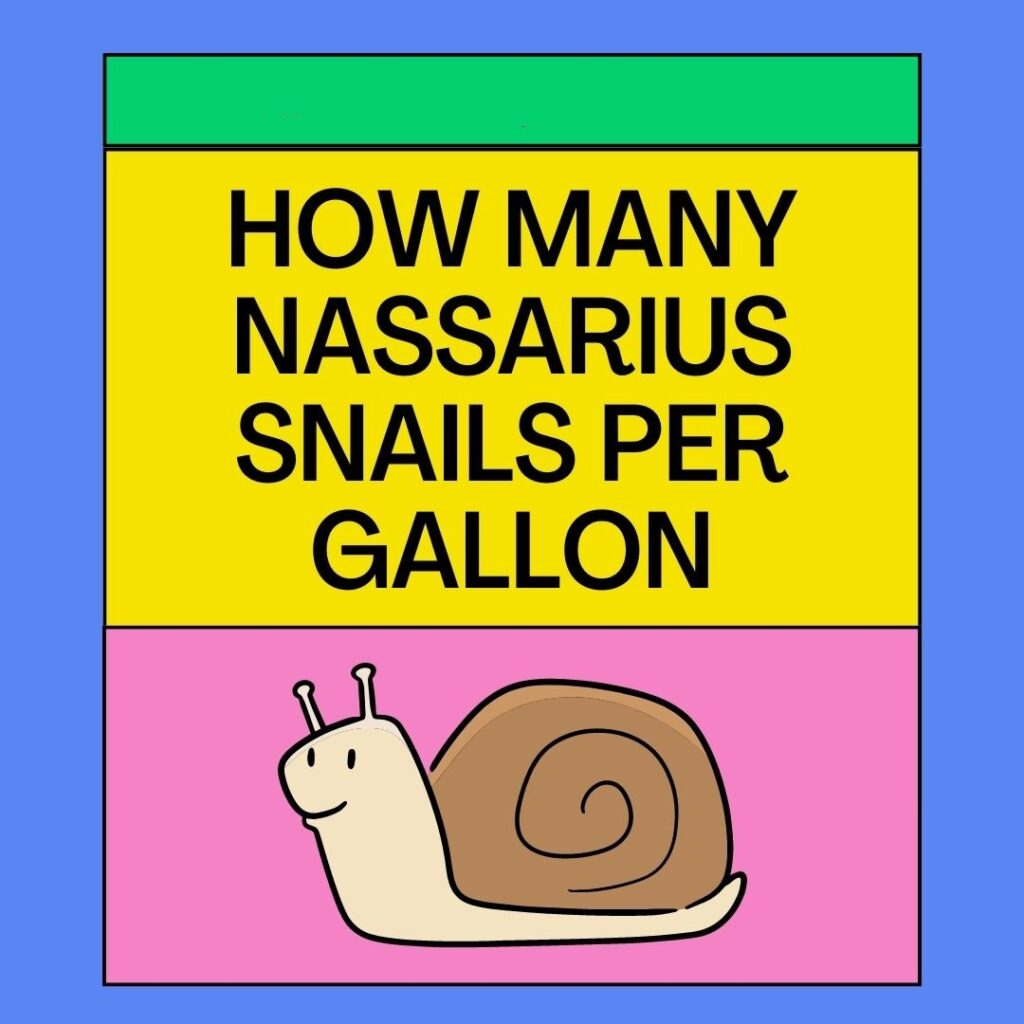
Have you been losing your cool over thinking how many Nassarius snails are just enough?
In that instance, we will help you determine how many Nassarius snails per gallon are optimal.
One snail for every two liters of water is a good benchmark to start with. For Tongan Nassarius snails, there should be one for every 2 to 3 gallons. There’s room for approximately 10–15 Nassarius snails in a 20-gallon tank. Therefore, you can have 25 to 30 Nassarius snails in a 50-gallon tank.
If you are curious to know more, then you don’t need to worry about anything. This is owing to the fact that we have all bases covered for you.
Moreover, we will suggest the best solution that is most appropriate to your predicament.
If you are interested in acquiring additional knowledge, continue to read!

How Many Nassarius Snails Are Fit for Per Gallon?
The Nassarius snail is a species of seawater snail that is utilized as a part of a clean-up crew. Similar to maintaining specific pea puffers per gallon, you need to ratio Nassarius based on tank size.
Below you will find information on how to properly house one gallon of Nassarius snails.
At What Ratio Should You Keep Nassarius Snails Per Gallon?
The suggested stocking levels for the tiny Nassarius snails are one or two snails per gallon. So, Nassarius snail size matters a lot when it comes to putting them evenly.
The Nassarius comes in two distinct iterations. You can encounter either one of them. There is also a much smaller variant. The width might range from a quarter of an inch to anything in between. This can be as long as three-quarters of an inch in length at its maximum.
Then there is a larger variant which is known as the Super Tongan Nassarius Snails. These snails can grow to a length of around 1 inch.
The following table will indicate the appropriate number of Nassarius snails for your tank.
| Nassarius Snails | Tank Size |
| 5 to 7 snails | 10 gallons |
| 10 to 12 snails | 20 gallons |
| 15 to 20 snails | 30 gallons |
| 20 to 22 snails | 40 gallons |
| 25 to 30 snails | 50 gallons |
| 35 to 40 snails | 70 gallons |
| 45 to 55 snails | 90 gallons |
| 50 to 65 snails | 100 gallons |
When keeping the larger Tongan snail, you might need to follow this ratio differently. You should only keep one snail for every two or three gallons of Tongan Nassarius.
It is not necessary for you to have a tank that is particularly large. A tank that is merely 5 gallons in capacity should not present much of a challenge. This is if you want to house one or two Nassarius snails inside it.
What Kind of an Influence Does Nassarius Have?
Nassarius snails sift through the substrate or living sand looking for bits of debris.
Therefore, if you were thinking, do Nassarius snails need sand? Then the answer is positive. They travel through the sediments in a way that is gradual and gentle to oxygenate the substrate. They can do this while lowering the amount of area in the sand bed that is anaerobic.
The Nassarius snails do a respectable job of cleaning the filthy water. But despite their playing such a great role underwater, you probably won’t see them very often.
This situation seems highly probable. Because these snails spend the vast majority of their time buried beneath the layer of sand.
A tank that has a deep substrate of sand is the ideal environment for Nassarius snails. It can house these snails. The optimal time to add these snails to an aquarium is after the substrate has developed.
It is believed that these snails will not cause any harm to the coral reefs. These do not harm other creatures either if kept in a reef aquarium.
Other Things to Maintain with Nassarius Snails
Nassarius snails are organisms that feed on organic waste. It makes a contribution to the gradual slowing of the pace of anaerobic decomposition.
So, when the Nassarius snails are in an enclosed environment, this process takes place.
They accomplish this goal by lowering the quantity of particulate organic matter that is stored within.
In the wild, they exhibit a high level of resilience to a variety of temperatures. They also behave in different ways depending on the salinity of the water.
Therefore, it is critically vital to increase the Nassarius snails’ lifespan. The following are some significant procedures to take care of Nassarius snails.
Always Maintain An Appropriate Temperature
Temperatures between 72 and 80 degrees Fahrenheit and must be maintained consistently for the Nassarius snails. This corresponds to approximately 22 to 26 degrees Celsius.
It is necessary for their specific gravity to fall between 1.023 and 1.025.
If the temperature is maintained adequately, then the Nassarius snail eggs can hatch properly. When they have finished laying their eggs, the females will leave behind a clutch.
This clutch can have anything from a few dozen to several hundred eggs.
After the eggs have been laid, the hatching process might take a minimum of nine days. It might even possibly take a maximum of fifteen days to complete it. The larvae will then emerge, causing successful Nassarius snail breeding.
You can use Tetra Safe Start for healthy maintenance when introducing new breeds in a new aquarium.
Sustain Consistent pH Rates
The ideal pH range for Nassarius snails is between 8.1 and 8.4. This range should be maintained. This can also change anywhere between 7.5 and 9 points.
The kH values that are ideal for them range somewhere between 5 and 12.
Keeping Caution with Hermit Crabs
You may need to exercise extreme caution when it comes to sharing space with hermit crabs. Like with clams and hermit crabs, you need to take great care of your Nassarius snails.
You need to also consider how many hermit crabs per gallon can be kept. When determining the appropriate number of hermit crabs, the rule of thumb is one per gallon.
There are multiple articles depicting Hermit crabs’ attempts to consume Nassarius snails. They even try to take over the shells of the Nassarius snails.
Alternatively, if your crab has a substantial amount of food, this problem can be solved. It also needs to have a large number of empty shells to reduce the hostility level.
Having these things ensured would make sure that your Nassarius snails can grow and live.
We have handpicked some extraordinary things for you. These items will help your aquarium maintain its flawless appearance on a regular basis.
FAQs
Do Nassarius Snails Feed On Other Live Snails?
No, Nassarius snails do not feed on live snails. They are predatory invertebrates that feed on dead animals rather than other living snails. Nassarius snails do not devour any form of algae. They feed on carrion, which is dead fish. If one of your snails dies, then another snail might feed on it.
Where Do Nassarius Snails Live?
Nassarius snails usually live on the western coast of North America. Their natural habitat is specifically the mudflats on the foreshore. These snails also live on the sand and mud in shallow water. Because nassarius snails like to spend their inactive time burrowing into the substrate.
Do the Eggs of the Nassarius Snails Hatch Quickly?
Yes, the eggs of the Nassarius snail hatch fairly quickly. The chances of the eggs hatching in three to five days seem to be very favorable. This happens if all of the needs are achieved. They are going to start hatching as long as the water inside does not change. Soon you will see the new snails.
Wrapping Things Up
We hope our piece helps you understand how many nassarius snails per gallon are required. We also hope you get to pick the ideal quantity of Narrasius as well.
Did you know that a single meal can support some Nassarius for several days? This happens in certain Nassarius species, like the Nassarius reticulatus species.
Thank you for reading!
